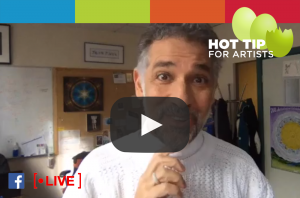Remove the stress of feedback
Remove the stress of feedback
Giving and receiving feedback can be a fear provoking process, but there’s no doubt it can help identify issues and solve them.There is a best way to give and receive feedback so that you remove the stress associated with it.
Video Transcript
Hi everyone. I’m Tracy Margieson, and I’m the Project Manager of The Arts Well being Collective at Arts Centre Melbourne. I’m here today to give you a hot tip about how to give feedback. Giving and receiving feedback is one of those things that many of us absolutely dread. Usually when someone says, “Can I give you some feedback,” you can feel your stomach started churn, and you slowly break out into a cold sweat. At Arts Centre Melbourne, we say that feedback is a gift. And we’re encouraged to give positive and constructive feedback regularly.
Giving feedback when you’re a manager or a director is usually a bit easier. You’ve got a formal working relationship with someone and giving feedback is kind of expected. But it’s much harder when you’re working on a profit share project, or you’re working for a client, or you’re working with a group of creatives to develop a show, and the last thing that you wanna do is to rock the boat or to get someone off side. But you also wanna have an awesome creative process. You don’t want one where everyone’s walking on eggshells and saying that it’s all perfect when really, you feel like you’re just watching something unravel before your eyes.
This tip is on what we’ll call Strengths Based Solutions Focused Feedback. Unless you can come up with a better name for it, and then you can call it that. So this involves thinking about what strengths the person has in the situation and then what the negative flip side might be that is causing you concern. You then wanna offer specific feedback that focuses on the strengths with a clear measurable solution and action.
For example, let’s say you’re rehearsing a show and someone keeps wanting to do a scene again and again and again and you’re not even getting close to working through all the other parts. You could say something like, “I love how you’re exploring the physicality of this character. It’s bringing so much to this scene. But I’m concerned that Anna hasn’t had a chance to explore her scene as thoroughly. Would we be able to move on to that section and return to this one at the end of the day if there’s time?” This way, you’re focusing on what someone’s doing well, and you’re giving them the opportunity to help them decide the solution.
Or let’s say you’re doing a piece of graphic design for a client. And each time you pitch something, they come back with a totally different brief. You could try feedback along the lines of, “It’s great that everyone has so many big ideas about how this piece could look. But I’m worried that we weren’t be finished by the great date if the scope shifts to drastically again. Maybe we could agree to get all ideas in by the end of the week, and after that we’ll agree to make just minor alterations.”
So here’s what I want you to try this week. When you want to givefeedback to someone, focus on the great things that they’re bringing to the table and how they’re benefiting your project. And then think about what you wanna see happen or change and frame your feedback with those two things, strengths based, solutions focused.
I hope you found this hot tip useful. If you’d like to find out more about Arts Centre Melbourne or The Arts Well being Collective, visit www.artswellbeingcollective.com.au. Thank you.
Have you got our 4 Free Resources for artists?
webinar





0 Comments